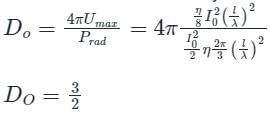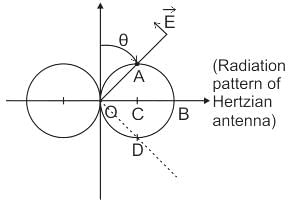Electronics and Communication Engineering (ECE) Exam > Electronics and Communication Engineering (ECE) Tests > Electromagnetics > Test: Antenna - Electronics and Communication Engineering (ECE) MCQ
Test: Antenna - Electronics and Communication Engineering (ECE) MCQ
Test Description
10 Questions MCQ Test Electromagnetics - Test: Antenna
Test: Antenna for Electronics and Communication Engineering (ECE) 2025 is part of Electromagnetics preparation. The Test: Antenna questions and answers have been
prepared according to the Electronics and Communication Engineering (ECE) exam syllabus.The Test: Antenna MCQs are made for Electronics and Communication Engineering (ECE) 2025 Exam. Find important
definitions, questions, notes, meanings, examples, exercises, MCQs and online tests for Test: Antenna below.
Solutions of Test: Antenna questions in English are available as part of our Electromagnetics for Electronics and Communication Engineering (ECE) & Test: Antenna solutions in
Hindi for Electromagnetics course. Download more important topics, notes, lectures and mock
test series for Electronics and Communication Engineering (ECE) Exam by signing up for free. Attempt Test: Antenna | 10 questions in 30 minutes | Mock test for Electronics and Communication Engineering (ECE) preparation | Free important questions MCQ to study Electromagnetics for Electronics and Communication Engineering (ECE) Exam | Download free PDF with solutions
Test: Antenna - Question 1
In a typical mobile satellite array antenna, if three elements are activated, how many elements are deactivated?
Detailed Solution for Test: Antenna - Question 1
Detailed Solution for Test: Antenna - Question 2
Detailed Solution for Test: Antenna - Question 3
Detailed Solution for Test: Antenna - Question 4
Test: Antenna - Question 5
What should be the length of transmitting Antenna for radiating radio waves of 900 MHz
Detailed Solution for Test: Antenna - Question 5
Test: Antenna - Question 6
The efficiency of an antenna having a resistance of 30 Ω and radiation resistance of 60 Ω is
Detailed Solution for Test: Antenna - Question 6
Test: Antenna - Question 7
What is the length of the antenna needed to a signal of 500 KHz frequency?
Detailed Solution for Test: Antenna - Question 7
Test: Antenna - Question 8
For a Hertz dipole antenna, the half power beam width (HPBW) in the E-plane is
Detailed Solution for Test: Antenna - Question 8
Detailed Solution for Test: Antenna - Question 9
Detailed Solution for Test: Antenna - Question 10
|
11 videos|64 docs|89 tests
|
Information about Test: Antenna Page
In this test you can find the Exam questions for Test: Antenna solved & explained in the simplest way possible.
Besides giving Questions and answers for Test: Antenna, EduRev gives you an ample number of Online tests for practice
















 times electric field at point B
times electric field at point B

















